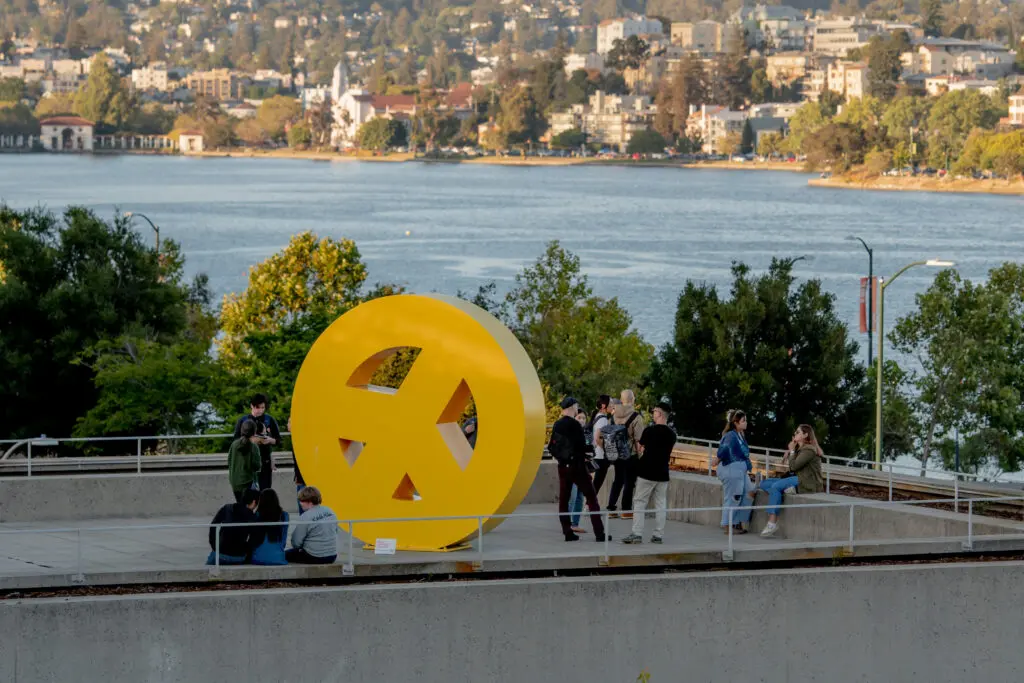Capture the Season: Four Perfect Spots for Winter Family Photos at OMCA
This winter, create memories that reflect the heart, history, and creativity of Oakland. Whether you’re gathering the whole family for a holiday card or simply looking to document the season together, OMCA’s campus and its surroundings offer inspiring backdrops that celebrate the spirit of our community.
From bold murals to powerful cultural landmarks, here are four meaningful places to take your family photo this season:
Barry McGee Mural: For the Creative Family
If your family is full of artists, makers, or lovers of bold visual style, the vibrant Barry McGee mural is the perfect backdrop. Known for its striking colors and dynamic geometric forms, this beloved piece captures the artistic energy that Oakland is known for. Pose in front of its sweeping patterns and let your family’s creativity shine through.

Black Power Installation: For the History Lovers
For families who hold Oakland’s deep history close, the Black Power installation offers a photo setting rich with meaning. This powerful artwork honors the legacy of activism, resilience, and community leadership rooted in our city. A family portrait here becomes more than a photo—it’s a celebration of heritage and the stories that shape generations.

“Welcome to Oakland” Sign: For Proud Oakland Natives
Nothing says hometown pride like the iconic Welcome to Oakland sign. Whether you grew up here or have made Oakland your chosen home, this spot offers a joyful way to honor your roots. Snap a photo beneath the famous sign and let your family celebrate what it means to belong to this vibrant, diverse city.

Big Peace by Tony Labat: For Everyone Wishing for Peace This Season
Amid the gatherings, celebrations, and movement of the winter season, Big Peace by Tony Labat stands as a reminder of what unites us all. With its bold symbol and hopeful message, it’s an ideal spot for families seeking a serene, meaningful portrait. Capture a moment of togetherness that reflects your hopes for the year ahead.

Winter is a time for connection—for honoring who we are, where we come from, and the community we share. Whether your family is creative, history-minded, Oakland-proud, or simply looking to embrace a moment of peace, OMCA offers spaces that help your story come alive.
Gather your loved ones, explore the Museum grounds, and discover the perfect place to capture your Oakland winter story.